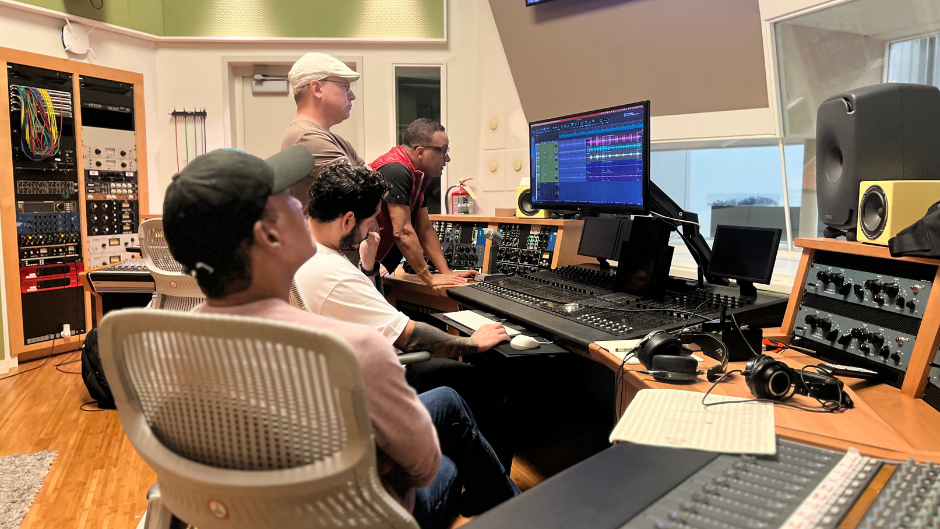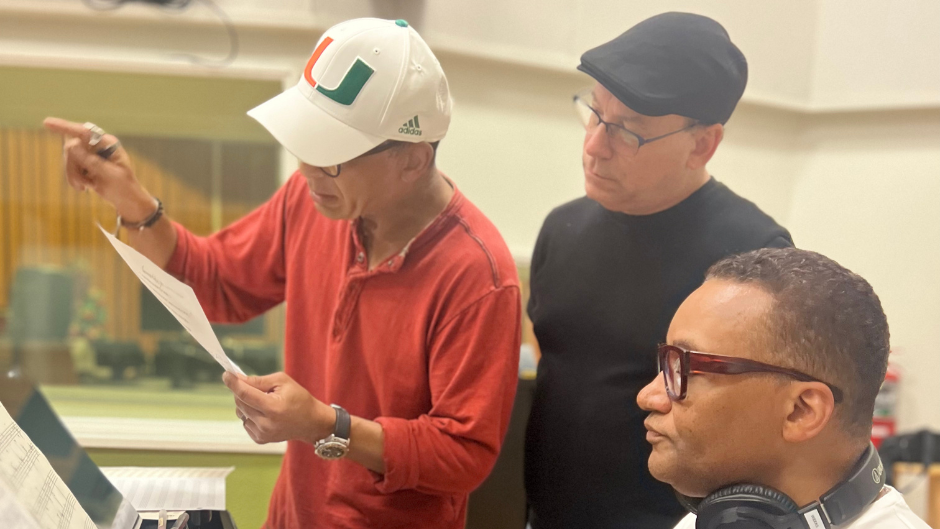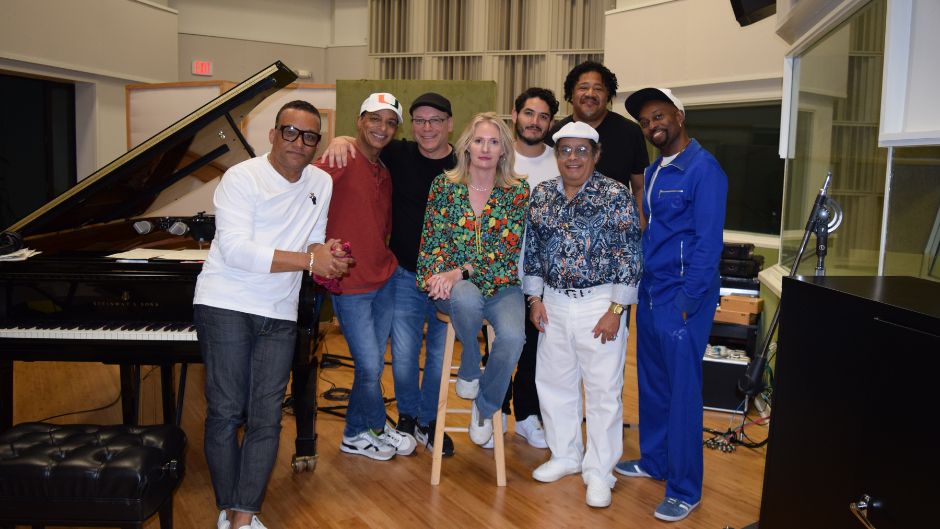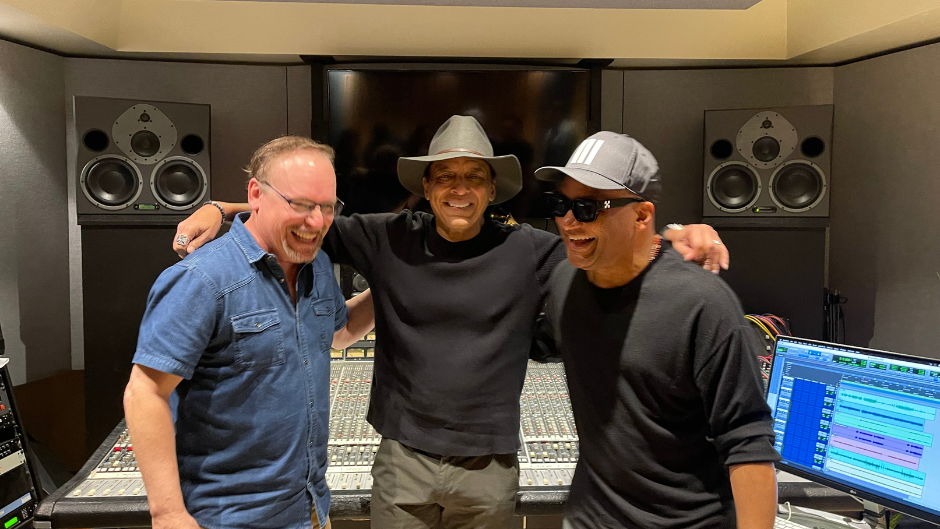Most North Americans revere Nat King Cole as a superb interpreter of the American songbook. But people throughout the Spanish-speaking Caribbean, especially Cubans, adored Cole as an American star who performed in glamorous pre-Revolutionary Havana and recorded three albums of their most beloved boleros in Spanish between 1958 and 1962 – a crossover artist before the word was invented.
“I grew up listening to Nat King Cole in Spanish—my parents just loved those records,” says Cuban-American singer and Frost School of Music alumnus Jon Secada (B.M. ’83, M.M. ’86). Secada rocketed to stardom in the early 1990s with the dual-language hit “Just Another Day”/“Otro día más sin verte.” “Later on, I realized why I really enjoyed this guy. More than the fact that he sang in Spanish, his voice and musicality were so beautiful.”
Last fall Secada joined Frost studio music and jazz lecturer Gonzalo Rubalcaba Gonzalo Rubalcaba, one of Cuba’s greatest jazz pianists; producer/music executive Julio Bagué (M.M. ‘93), a member of the Dean’s Advisory Committee; and peermusic CEO Mary Megan Peer at Weeks Recording Studio for an album that radically re-imagines Cole’s recordings in Spanish for a contemporary era.

The three men gathered recently at Miami’s peermusic offices to talk about a project that is deeply meaningful to them.
“What I think really moved me and moved us to do this was the challenge of what already exists and what we are looking for,” says Rubalcaba. “But always with a lot of respect and love.”
The project evolved from two other Cuban music albums Bagué produced with Secada, arising largely from Bague’s position as a vice president at peermusic, a production and publishing company whose history is interwoven with the island. The first, recorded with Secada in 2017, was a Latin Grammy-winning tribute to legendary Cuban singer Beny Moré (whose publishing was with peermusic). The second, with Secada and Rubalcaba, was the Grammy-nominated “Solos,” an album of classic Cuban romantic songs.
That company founder Ralph Peer persuaded Cole to record on the island - from the company’s Cuban catalogue – helped make the third album a natural follow-up. Extending the bi-lingual, bi-cultural inspiration, half the tracks are Hoagy Carmichael standards like “Stardust” and “Fascination,” which Cole also performed regularly.
“You come full circle,” says Bagué. “I also wanted to bring a project of this level, with artists of this level, to Frost.”
Frost School of Music Dean Shelly Berg quickly approved. The team brought world-class players: legendary Latin jazz percussionist Giovanni Hidalgo, drummer Clarence Penn, and bassist James Genus. Guest artists were celebrated Cuban vocalist Aymee Nuviola and virtuoso Venezuelan cuatro player Jorge Glem. The album was music produced by Bagué and Mary Megan Peer, granddaughter of peermusic's founder.

The Weeks studio was ideal, offering not just state-of-the-art equipment but also a layout that allowed for an old-school recording session. The musicians recorded live for just three days. Rubalcaba made the last few arrangements the night before the final session. “There was no time for rehearsals,” says Bague. “We went there in the spirit of jazz.”
Another asset was Bague’s 2022-23 intern, Frost student Grecia Daniel Rivera Carrasquillo, who volunteered to organize a group of students to take on the time-consuming chore of setting up and packing up instruments and equipment.
Bagué says plans are to release the album this year and a documentary on the project and Cole’s Cuban history (something peermusic did for the Beny Moré album). A tour is also in the works.
Rubalcaba was the arranger and architect of the spare, rhythm-centric line-up - no lush 50’s strings here. Rubalcaba, who grew up in communist Cuba, couldn’t listen to Cole’s music until he left in the 90’s – when he was deeply impressed. He was inspired by the challenge of reinventing Cole’s classic recordings of boleros like “Quizás, quizás, quizás” (Perhaps, Perhaps, Perhaps) and “Acércate Más” (Come Closer To Me) that are etched in Hispanic consciousness.
“This guy is singing these songs in a way no one ever did before,” says Rubalcaba. “These memories are so strong it’s difficult to get them out of your head. But there’s no sense in repeating what has been done.”

The result is true to the artists, says Bagué. “We went more adventurous musically because Gonzalo is very musically adventurous,” he says. “Jon keeps everything centered, everything accessible.”
The result is edgy, elegant, and rhythmically intricate, with Rubalcaba anchoring an animated interplay between the musicians. His playing is in particularly intimate conversation with Secada’s singing, pushing the singer to new artistic heights.
“This recording was the most challenging vocally I’ve ever done,” Secada says. “At the same time, the beauty and satisfaction, the feeling and passion are there.”

